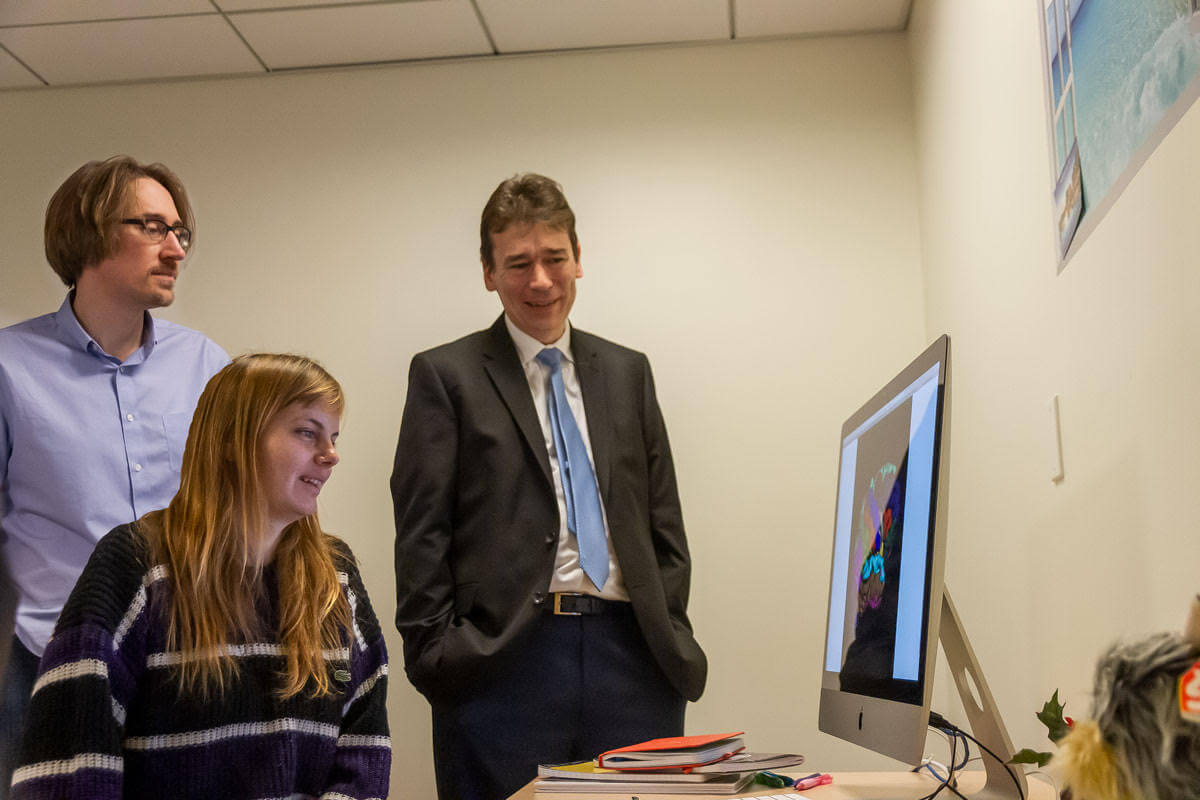USC researchers found “hidden factors” in medical data that could improve Alzheimer’s disease prediction and lead to better outcomes.
Nearly 50 million people worldwide have Alzheimer’s disease or another form of dementia. While age is the greatest risk factor for developing the disease, researchers believe most Alzheimer’s cases occur as a result of complex interactions among genes and other factors. But those factors and the role they play are not known—yet.
In a new study, USC researchers used machine learning to identify potential blood-based markers of Alzheimer’s disease that could help with earlier diagnosis and lead to non-invasive ways of tracking the progress of the disease in patients. The method was developed by USC computer science research assistant professor Greg Ver Steeg, a senior research lead at the USC Information Sciences Institute (ISI). Machine learning is a subset of artificial intelligence (AI) that gives computers the ability to learn without being explicitly programmed.
“This type of analysis is a novel way of discovering patterns of data to identify key diagnostic markers of disease.” – Paul Thompson
“This type of analysis is a novel way of discovering patterns of data to identify key diagnostic markers of disease,” said team member Paul Thompson, the associate director of the USC Mark and Mary Stevens Neuroimaging and Informatics Institute and professor in the Keck School of Medicine at USC. “In a very large database of health measures, it helped us discover predictive features of Alzheimer’s disease that nobody suspected were there.”
The study, “Uncovering Biologically Coherent Peripheral Signatures of Health and Risk for Alzheimer’s Disease in the Aging Brain,” appeared in Frontiers in Aging Neuroscience, Nov. 28. The study authors are from the USC Mark and Mary Stevens Neuroimaging and Informatics Institute and the USC Information Sciences Institute.
Identifying biomarkers
While most Alzheimer’s research to date has focused on known hypotheses, such as the build up of amyloid plaque and tau protein in the brain, both measures have proved tricky to measure in the bloodstream.
As such, diagnostic tests are largely based on memory. Unfortunately, by the time a person starts showing signs of memory loss, they may have already had the disease for decades. Catching the disease early, before symptoms even appear, is a crucial step in managing the disease with drugs and lifestyle changes that can improve quality of life.
As a result, neuroscientists at USC wondered if there could be other “hidden” indicators of Alzheimer’s—factors that could be detected with a routine blood test. But how do you find something when you don’t know what you’re looking for?
So, they turned their attention towards machine learning, enlisting the expertise of Greg Ver Steeg, a USC computer scientist and physicist who specializes in mining complex data.
Read the full story on USC Viterbi School of Engineering’s website
About the image
Greg Ver Steeg (left) and Paul Thompson, pictured with USC Neuroscience student Joanna Bright, who is researching Parkinson’s Disease. Thompson hopes to use Ver Steeg’s machine learning method to find hidden factors in other brain diseases, in addition to Alzheimer’s. (Photo: Caitlin Dawson).
